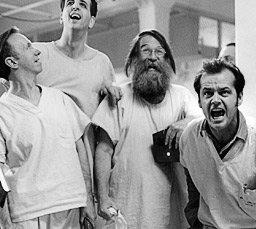Good
morning.
Some
signings and non-signings –
The Mets signed 1st round pick, P Justin Dunn, and 3rd round pick, 3B Blake Tiberi. Both have reported to Brooklyn.
Well, you can forget the effect on an
PED testing when it came to St. Louis Cardinals first round pick, SS Deven Perez. He did fall from a projected top 5 pick
to the Cards 23rd pick which lowered his signing bonus to a mere
$2,222,500. How do you say ‘poor baby’ in Spanish
UK
baseball signee, OF Jaren Shelby, decided to
turn down his commitment to Kentucky and announced that he would instead attend
the JUCO State College of Florida next season. Not surprisingly, he was
undrafted in the 2016 draft. Shelby was a Florida all-State player who hit .378
with 12 home runs Tates Creek (FL) HS.
LHP
Kyle Miller (44th player drafted
overall) has signed with the Atlanta Braves ($1.4M), per Jim Callis. He will spend the summer with the Braves
summer league
The
Philadelphia Phillies signed the overall first pick in the draft, Mickey Moniak, which included a $6.1mil bonus, far
below the $9.015mil allotted to that slot. Look for the unused money to be used
to sign their second round pick, pitcher Kevin Gowdy.
As
for the continued look at the results of the Mets 2016 draft –
Frankly, I only see four
possible future major leaguers in the Mets draft, two of which (Matt Cleveland and Carlos Cortez) will probably not sigh and
attend college.
The other two (Justin Dunn and Anthony Kay) are featured here –
Having only two draftees make
it someday to your 25-man squad is not a bad average folks. Times That by 10
years and you have 20 major leaguers on your staff. Now, all you have to do is
fill the staff in with five free agents or international signees.
I found the Mets urgency to
draft college players here puzzling, especially since all the players they have
signed so far have been assigned to rookie teams. Aren’t these players already
in their 20s?
One more thing… there is a
lot of helium in this Mets drafts. Speed, not control, seems to have been the
criteria to be drafted as a Mets pitcher here and I guess the front office is
hoping to catch lightning in a bottle… or, at least, another Jacob deGrom.
Lastly the Mets signed the
280th pick in the draft, RHP Colin Holderman. The interesting part
is the slot money was $163,700 for Holderman, but the Mets will pay him a bonus
of $400.000.
Draft
Pick –
1.
1st round – 19th pick
overall – RHP Justin Dunn
11th
on Mack’s Top RHPs in draft
23rd
in Mack’s top 134 plyers to be chosen in draft
Currently
Unsigned
BA: #25 - In 2015, Chris Shaw
became the fifth first-rounder drafted out of Boston College. This year, Dunn
could be the sixth. The athletic righthander began the season pitching out of
the bullpen, but his lightning quick arm and promising offspeed pitches forced
him into the Eagles' rotation. Dunn is slight in stature, with some scouts
questioning his listed 6-foot-2, 184-pound frame. While he is short physically,
his stuff isn’t. He pitches consistently at 92-95 and touching as high as 97 at
times with his fastball. His best secondary pitch is his slider, thrown with
tight spin, vertical shape and mid-80s velocity. He throws a curveball that has
similar shape to his slider, but breaks more loosely and grades out as a
below-average pitch, though its presence can disrupt hitters' timing. Dunn has
shown feel for a changeup at times, showing the ability to locate the pitch at
hitters' knees. His performance as a starter has encouraged teams that he can
start long term, as he has held velocity well deep into his outings.
Keith Law –
Justin Dunn was one of the
brightest spots in college baseball this spring, a highly athletic right-hander
who hit 99 mph in the bullpen before moving to Boston College's rotation, where
he was 93-96 mph with a solid-average slider that will probably end up as some
sort of ungodly wipeout pitch now that he's joining the Mets.
6-12 – BC eliminated from College
World Series
From Scout.com
after playoff –
The Mets led off with one of my
favorite players, Justin Dunn, who slid to 19. I think he could help a team out
of the bullpen this year, then be stretched out as a starter for the future. If
he had been starting all year, I think there is a very good chance he would
have been a top-10 pick.
Mack – Look for
Mets to sign him by the end of June, send him to St, Lucie to learn all about
the back end of the bullpen and get ready to see this guy in Queens in
September
My
other prediction to someday become a major leaguer is first round pick, P Anthony Kay ( 7th on Mack’s Top LHP in 2016 draft and 42nd
on Mack’s top 134 players in 2016 draft).
MLB #43 –
School: Connecticut Year:
Junior Position: LHP Age: 21 DOB: 3/21/1995 Bats: L Throws: L Height: 5'
11" Weight: 186 lb.
Previously
Drafted: 2013, 29th (866) - NYM
Scouting grades: Fastball: 55 |
Slider: 45 | Changeup: 55 | Control: 55 | Overall: 50
The University of Connecticut
has produced some excellent pro talent, headlined by George Springer, Nick
Ahmed and Matt Barnes. Kay, the Huskies' Friday night starter, could be the
next in line.
Kay fits the mold of the
advanced pitchability college lefty, one with a track record of success, not
only at UConn, but also in the Cape Cod League in 2014 and with Team USA in
2015. Kay succeeds by filling the strike zone and keeping hitters guessing, albeit
with the lack of a true out pitch. He'll top out at 94-95 mph with his
fastball, though he pitches more effectively at around 91 mph. He has a
consistently reliable changeup, though he telegraphs it at times by lowering
his arm slot. His breaking ball is fringy.
College performers like Kay
tend to do well on Draft day. He could be seen as a poor man's Mark Buehrle
type, one who could perhaps add a cutter at the next level to give him a
four-pitch mix, helping him to be a quick to the big leagues back-end starter.
Baseball America: #35 –
A 29th round pick of the Mets
out of high school, Kay was one of three promising Long Island prep arms, with
Stephen Woods and Matt Vogel also showing promise. All three chose to go to
college, and Kay has emerged as the best of the group. The ace of UConn's
staff, Kay throws three pitches for strikes. His fastball works in the low 90s
and touches 95 early in his starts. Scouts see his changeup is an above-average
or plus pitch; it shows both fade and tumble and generates swings and misses
from righthanded hitters regularly. Kay has a tendency to throw his changeup
from a slightly lower arm slot, giving scouts concerns that elite hitters will
be able to see the pitch coming. He throws a breaking ball with slurvy shape.
Kay usually throws the pitch against righthanded hitters, and has not thrown it
with conviction this spring. Kay is on the shorter side, standing at 6-foot,
but he has a wide, sturdy build.
Keith Law - #28:
Kay has perhaps the best
changeup in the entire draft, an 82-86 mph dying rock that ghosts away from
right-handed hitters. It's got easy plus projection in a vacuum, though Kay
shows some arm slot variation on the changeup that might suppress the pitch's
effectiveness at the upper levels of pro ball.
Kay's fastball has been into
the mid-90s for starts at a time, topping out at 95, and has been around 90-95
all year, even in frigid temperatures. There's more plane on the heater than
one might expect from a 6-foot pitcher, a product of Kay's high three-quarter
arm slot.
The curveball is blunt and
loopy, a below-average offering that flashes fringe average and projects as a
45 or 50 at maturity.
While a low-to-mid 90s fastball
and plus changeup are a terrific foundation for any pitching prospect, Kay will
have to progress in more areas than are typical for a college arm. The
curveball will have to progress; otherwise, Kay will have to add a fourth pitch
so that he has enough viable weapons to negotiate through a pro lineup several
times. Some scouts think a cutter would suit him.
Other concerns include Kay's
size, which, when he leaves pitches up, causes his fastball to flatten out and
might cause him to be homer prone. And nobody is totally sure that his changeup
will play at plus because of the arm slot variation that could tip big league
hitters. But Kay has performed this year while many of his peers have not and
he has been trending in the right direction all spring. He could be
selected in the late-first
round, where other college changeup artists have found homes in recent years.
Mack – A potential
back end starter with the potential of a Logan Verrett or Sean Gilmartin. My disappointment was that I felt there were better names
still on the board (RHP Dakota Hudson, LHP Joey Wentz) when the Mets called out for Kay.
I like him… I’m
just not in love with the pick and I feel he could have still been around when
we picked in the second round.






